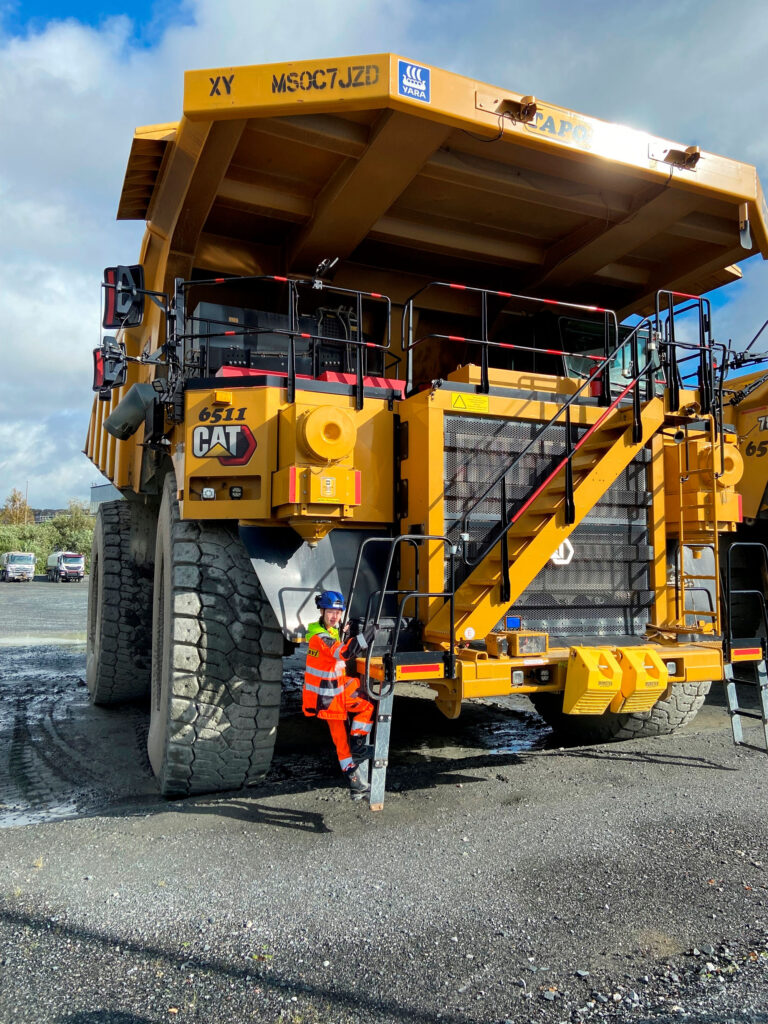PREVIOUS
New uses for industrial side streams
Jenna Puhakka, who is working toward her upper secondary qualification in mining at Taivalkoski, has nearly completed her professional training. She began her internship at Tapojärvi’s Siilinjärvi office in spring. During the summer, she extended her internship through a summer job, and now Jenna already works a permanent shift.
‘I should still be able to graduate during this year, after which I will continue my employment at Tapojärvi’, she says. ‘It’s great to graduate into a permanent job – my employment contract is already finalised.’
Jenna lives in Pudasjärvi while working in Siilinjärvi. Her commute amounts to approximately 300 kilometres, but not daily. Her employer has arranged accommodation for the weeks when she is working her shift. She has considered moving, for example, to the Kajaani region, from where it would only be a small distance to Pudasjärvi and to her workplace. At Tapojärvi, Jenna is responsible for operating one of the largest pieces of machinery. She drives a CAT 789, which is used to transport blasted stone to the crushing plant, and gangue for piling.
The shift starts with an initial inspection of the condition of the machinery, potential oil leaks, tyres and fluids. If any issues are discovered, these are handled by visiting the maintenance hall. If the machinery is in working order, the shift begins.
‘I’m slightly less than 160cm tall. With my shoes on and with a helmet on my head, I’m able to reach halfway up the tyres of the car, but I’m a skilled driver and tall enough to fill up the tank’, Jenna laughs.
Safety, predictive work and filing observations are also part of the job.
‘Accidents can be avoided when the employee takes care of their own and others’ safety. One must also report any observations that are out of the ordinary. I don’t think this job is as dangerous as people often assume, as long as occupational safety is taken into account.’
Knowledge of mining work is important
Jenna’s father works as a supervisor at the Kittilä gold mine and has passed on information about the field to his daughter. Her interest in mines slowly grew upon hearing more about them from her father and, after primary school, she decided to apply for training in the field.
Jenna is interested in mining work and how it operates: how the mine works, how its production is maintained, how impacts are minimised, and where the end products are used.
‘Now that I’m working at a mine, it’s useful to apply in practice the theory I learned at school. For example, it’s clear that performing loading work in dry weather produces a lot of dust, but this is being minimised as well as possible’, she continues.
Working at the mine feels meaningful to Jenna. Without mines, there would be no life. She mentions Yara’s Siilinjärvi mine as an example with direct linkages to food production.
‘We’d have no food if we weren’t able to access fertilisers produced at Siilinjärvi’, Jenna says.
What aspects of mining worry you, then?
‘I’d rather ask: without mining, where would crucial minerals be obtained from?’
Jenna Puhakka also dispels myths associated with female mining workers.
‘The field is constantly attracting more women. At the Siilinjärvi mine alone, there are several female mine operators, not to mention other tasks. We are treated well, and high-quality work is appreciated regardless of one’s gender.’

18-year-old Jenna Puhakka received a permanent job offer at Tapojärvi, despite still having a small amount of upper secondary school studies to complete.